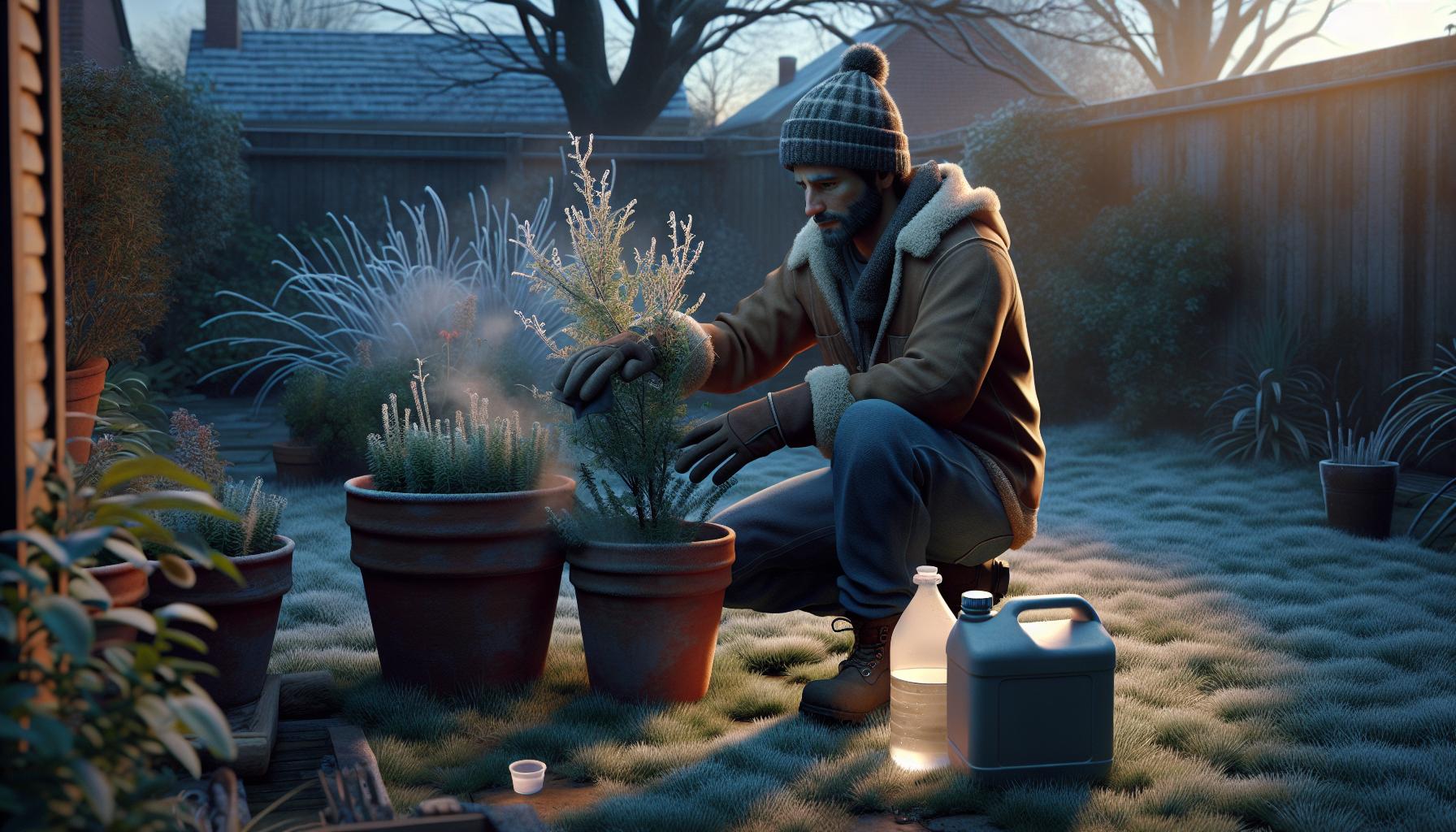A sudden hard freeze can devastate gardens and leave plant owners feeling helpless as they watch their beloved greenery suffer. When temperatures plummet unexpectedly many plants struggle to survive the harsh conditions that follow.
The key to saving freeze-damaged plants lies in proper post-freeze care including careful pruning assessment of damage maintaining soil moisture and avoiding premature removal of damaged parts. While some plants may show immediate damage others might take days or weeks to reveal the full extent of freeze injury.
Even severely damaged plants often have a chance at recovery with the right approach and patience. Understanding which steps to take – and equally important which actions to avoid – can make the difference between losing cherished plants and helping them bounce back for another growing season.
“1. Remove damaged parts
Removing freeze-damaged plant parts requires a systematic approach based on the plant type. Soft-stemmed plants like impatiens, cannas, and begonias need immediate pruning back to healthy tissue after a freeze. Cut away any blackened, mushy, or foul-smelling portions.
For woody plants, timing is crucial:
- Wait until late winter or early spring
- Look for new growth emergence
- Cut branches below discolored areas
- Remove only confirmed dead tissue
A simple test confirms tissue health:
| Test Method | Living Tissue | Dead Tissue |
|---|---|---|
| Bark Scratch | Green layer | Brown/Black |
| Stem Bend | Flexible | Brittle |
| Color Check | Green/White | Dark/Black |
The key to successful pruning lies in identifying living tissue. Scratch the bark gently with a fingernail – green underneath indicates life while brown or black signals death. Remove damaged sections with clean, sharp pruning tools to prevent disease transmission.
2. Check soil moisture

Frozen soil prevents plants from absorbing water, creating a dehydration risk even when the ground appears wet. Once temperatures rise above freezing, insert a moisture meter or finger 2 inches into the soil to check dampness levels. The soil’s top layer may feel dry while deeper sections retain moisture.
Here’s how to check soil moisture effectively:
- Press a finger into the soil – moist soil forms a ball when squeezed
- Use a wooden dowel – it darkens when moisture is present
- Check drainage holes – wet soil appears darker around openings
- Monitor pot weight – lighter pots indicate dry soil
| Soil Condition | Action Required |
|---|---|
| Dry & Crumbly | Water thoroughly |
| Slightly Moist | Monitor daily |
| Wet & Soggy | Allow to dry |
Apply water slowly when the soil feels dry, allowing it to penetrate deeply rather than run off. Mulch around plants with 2-3 inches of organic material to maintain consistent moisture levels as temperatures fluctuate. Space watering sessions 3-4 days apart to avoid oversaturation during post-freeze recovery.
3. Avoid immediate pruning

Pruning freeze-damaged plants requires patience during the recovery period. Dead or damaged sections of plants serve as natural insulators, protecting the remaining healthy tissue from additional frost damage. Here’s what to consider:
- Wait for warmth: Leave damaged foliage in place until temperatures stabilize above freezing
- Protect vital growth: Brown or wilted leaves shield emerging buds beneath
- Prevent shock: Early pruning stimulates vulnerable new growth susceptible to late frosts
- Monitor tissue health: Scratch stems gently – green underneath indicates living tissue
- Keep tools ready: Clean sharp pruners for when pruning time arrives
| Plant Type | Recommended Pruning Time |
|---|---|
| Soft-stemmed | After last frost date |
| Woody plants | Late winter/early spring |
| Perennials | When new growth emerges |
The damaged parts on plants create a protective barrier against future cold snaps. Removing these sections too soon exposes tender tissue to additional temperature fluctuations. This protective layer maintains until spring temperatures stabilize consistently above freezing.
4. Protect from further frost

Protecting plants from additional frost damage remains essential during the recovery period. Moving potted plants indoors or to a sheltered location like a garage prevents further cold exposure. For in-ground plants, protective covers such as blankets, tarps or frost cloth create an insulating barrier against freezing temperatures.
Place warm water jugs under plant coverings to generate additional heat throughout cold nights. The water-filled containers act as thermal mass, releasing stored warmth gradually to maintain higher temperatures around vulnerable plants.
Key protection methods:
- Cover plants before sunset to trap existing warmth
- Remove coverings in the morning to allow sunlight exposure
- Monitor local weather forecasts for frost warnings
- Keep protective materials readily available until after the last frost date
These preventative measures protect recovering plants from additional stress or damage until temperatures stabilize consistently above freezing. Maintaining this protection proves especially critical for tender new growth that emerges during the recovery process.
5. Monitor for new growth
“
Monitoring plants for signs of recovery reveals their survival status after a hard freeze. Inspect plants at the base and crown for emerging shoots or leaf buds. Common indicators of recovery include:
- Green tissue under bark when gently scratched
- Flexible stems that bend without breaking
- New leaf buds developing along branches
- Fresh shoots emerging from the soil
- Firm root systems when gently probed
Check plants weekly during the recovery period, focusing on areas where new growth typically emerges. For woody plants, look for buds swelling along stems and branches. Herbaceous perennials often show fresh growth from the crown or base.
Signs of successful recovery include:
| Plant Type | Recovery Indicators | Typical Timeline |
|---|---|---|
| Woody Plants | Swollen buds, green cambium | 3-6 weeks |
| Perennials | New basal growth | 2-4 weeks |
| Tender Plants | Fresh shoots from soil | 1-3 weeks |
Remove any remaining dead foliage once new growth appears, clearing space for emerging shoots. Mark plants showing no signs of recovery after 6 weeks for potential replacement.



